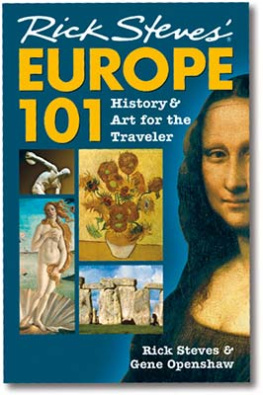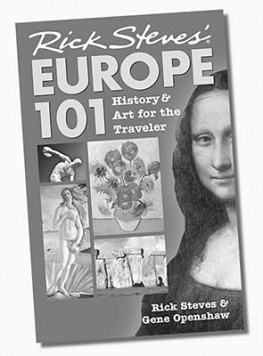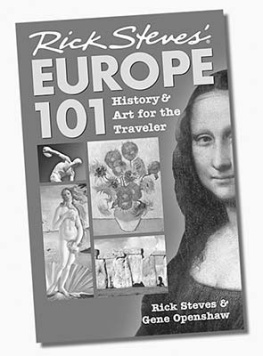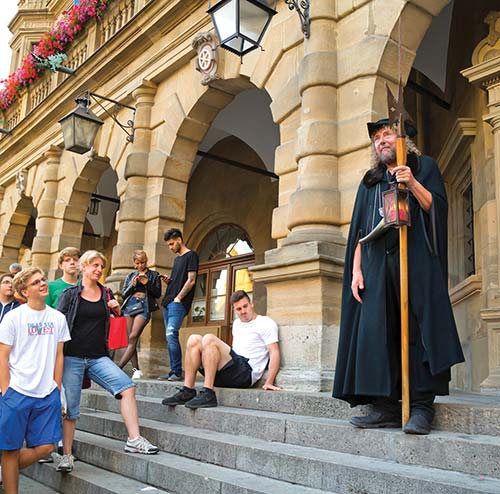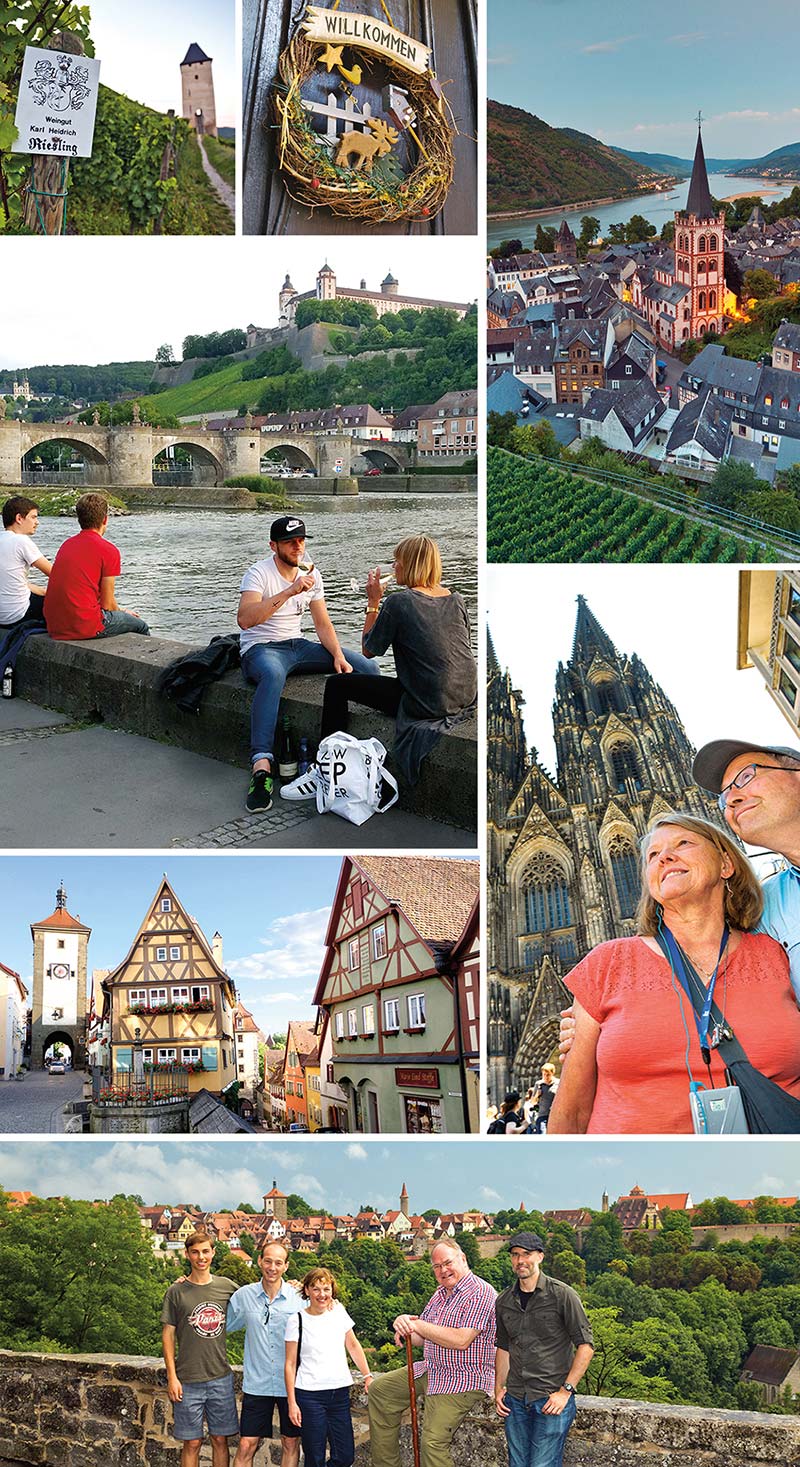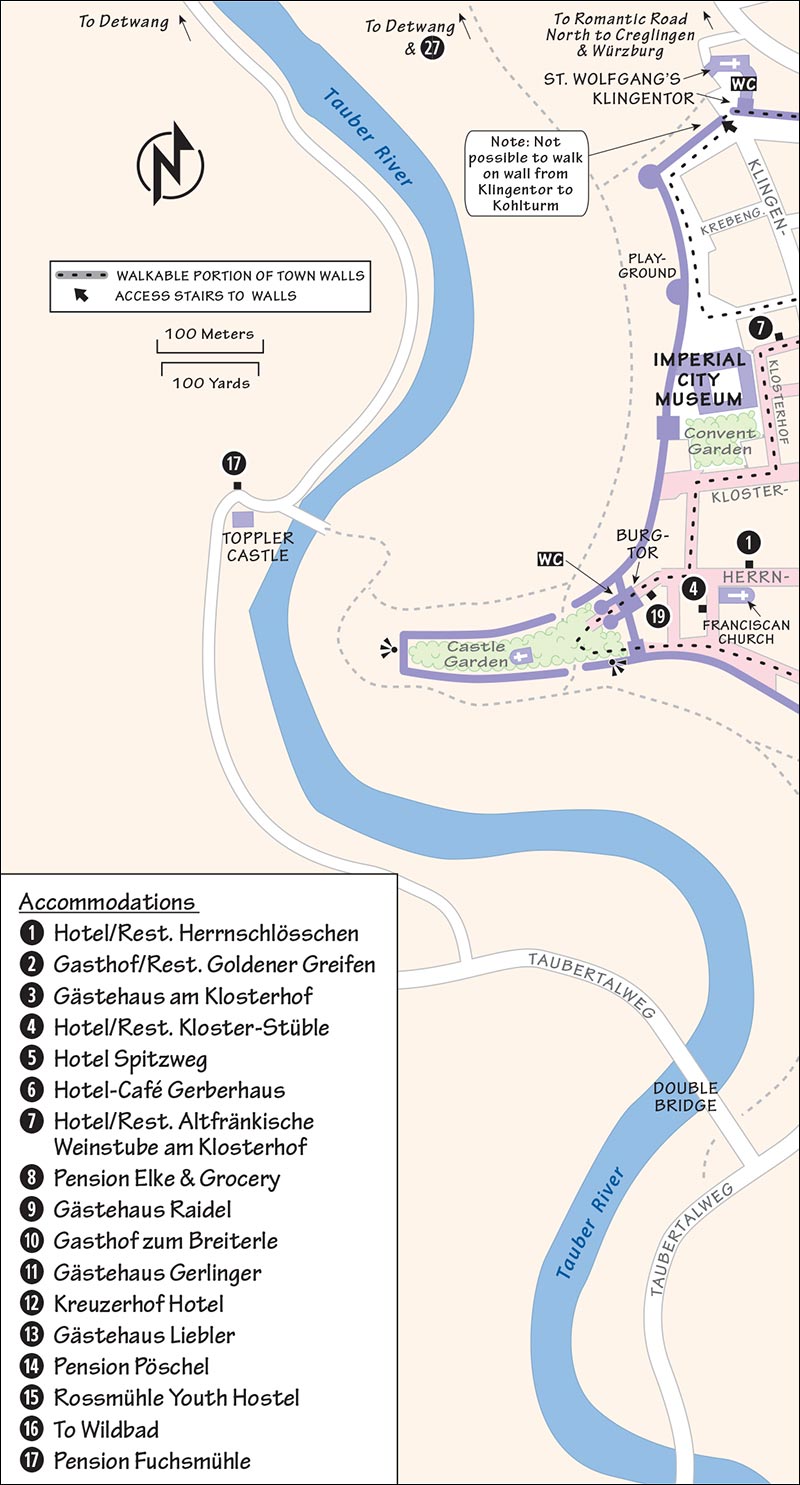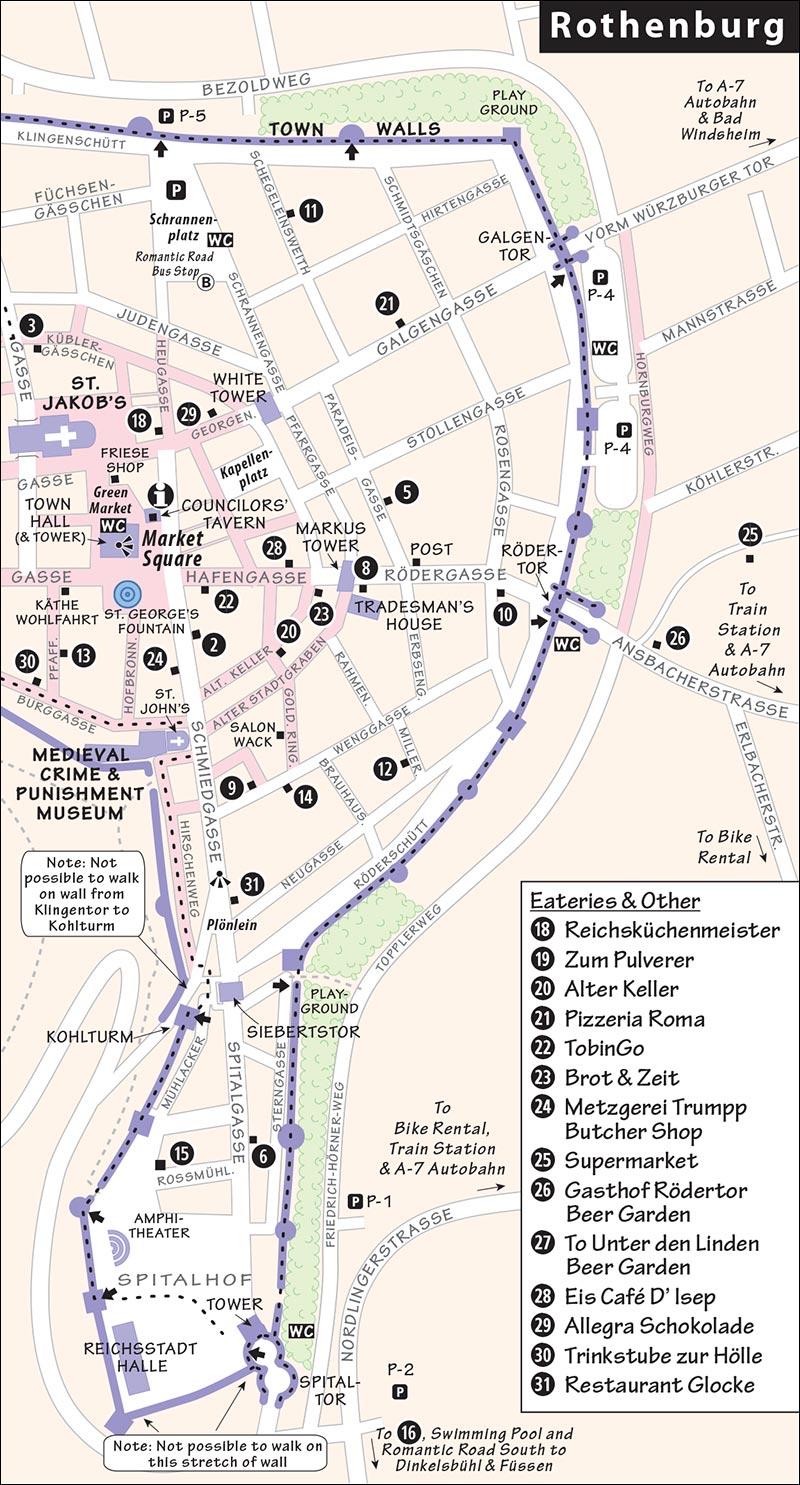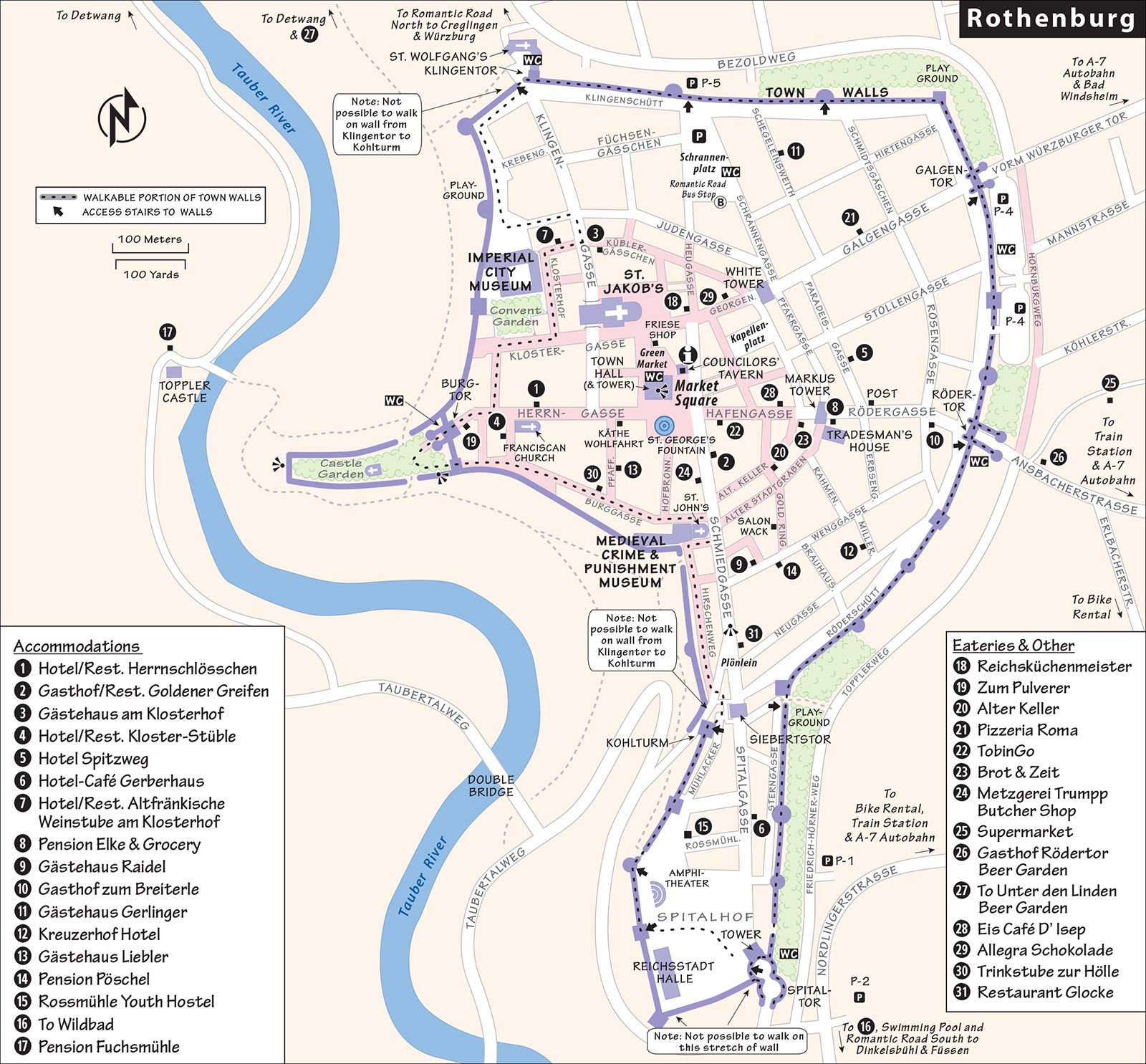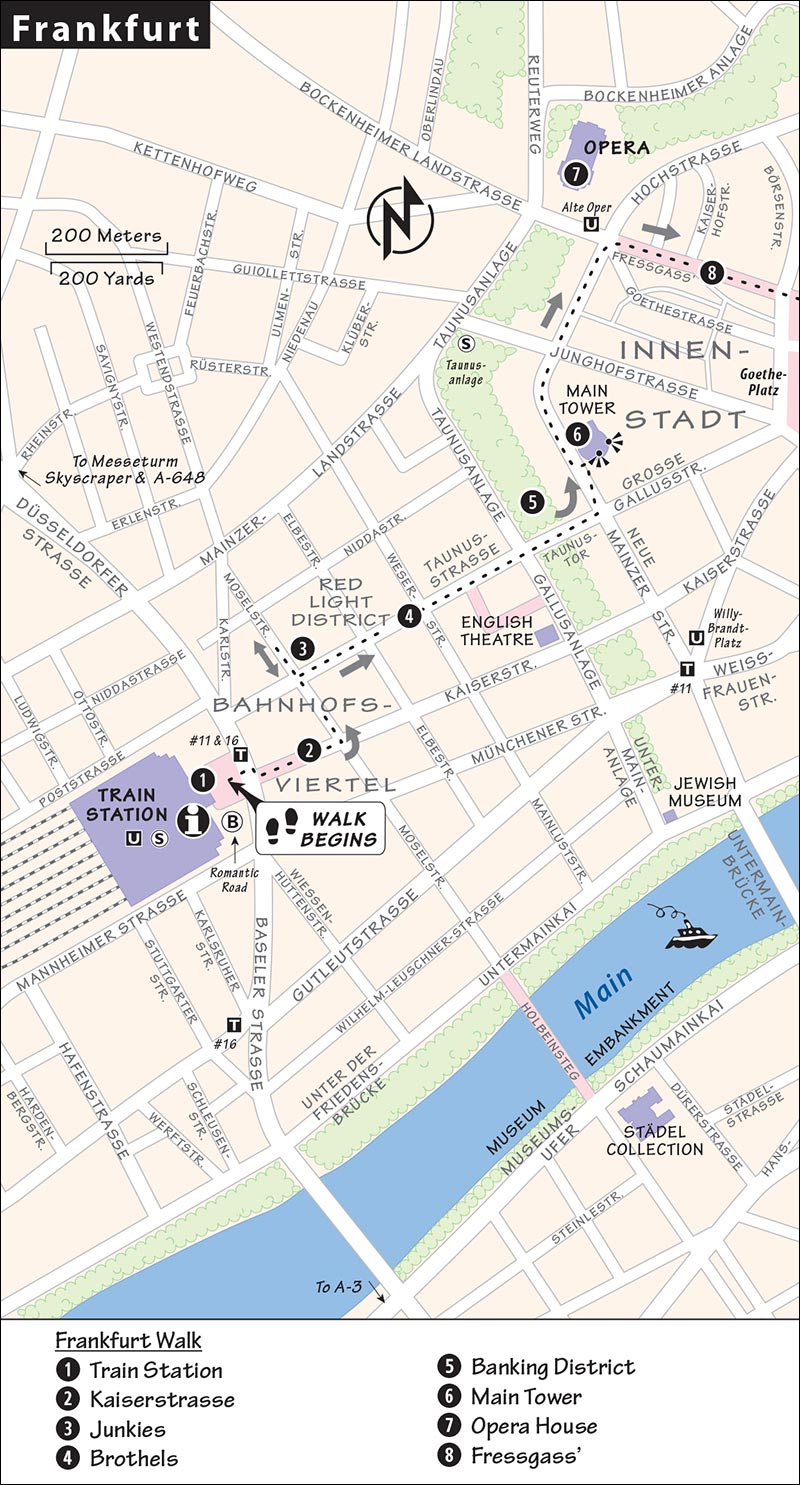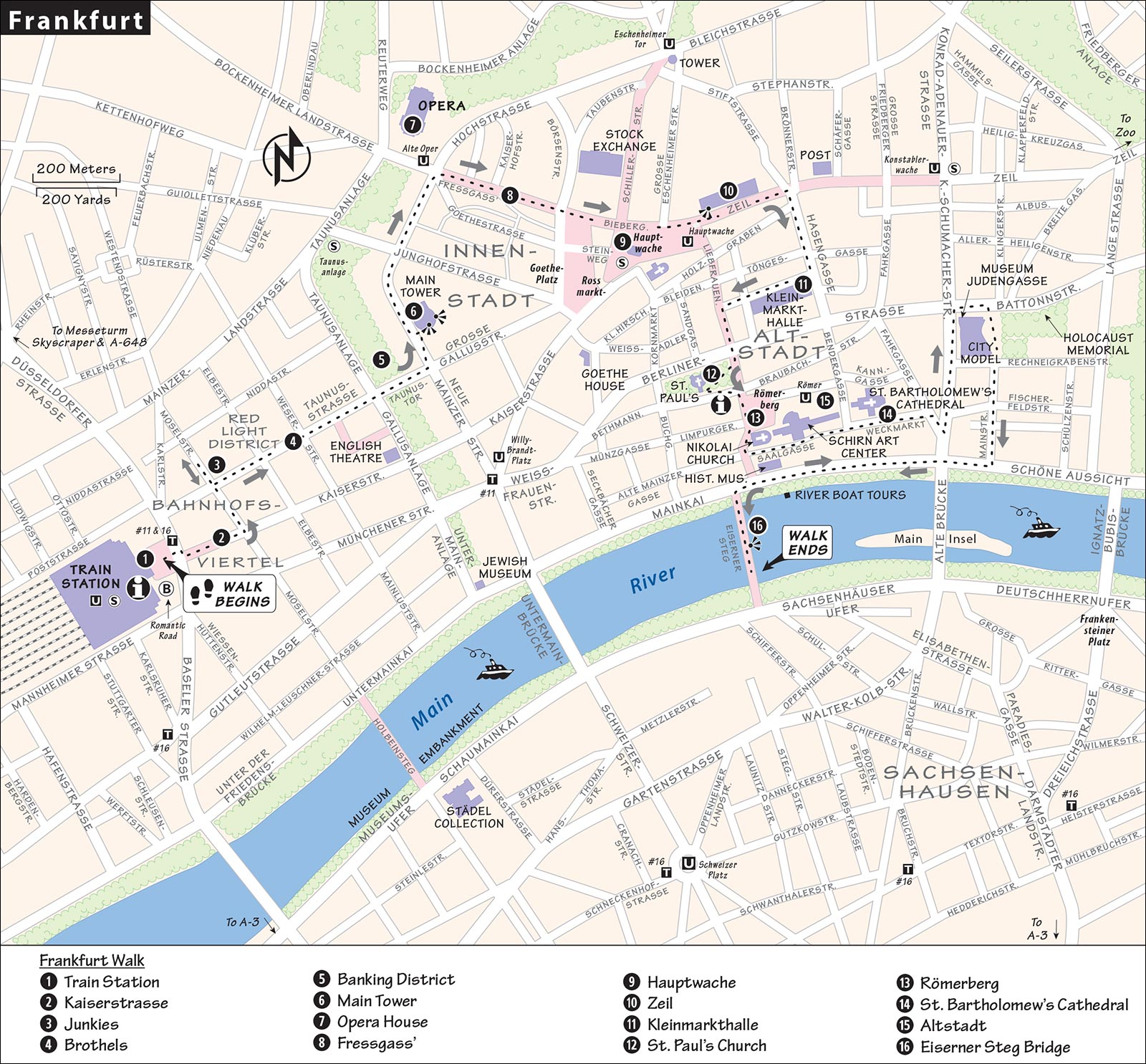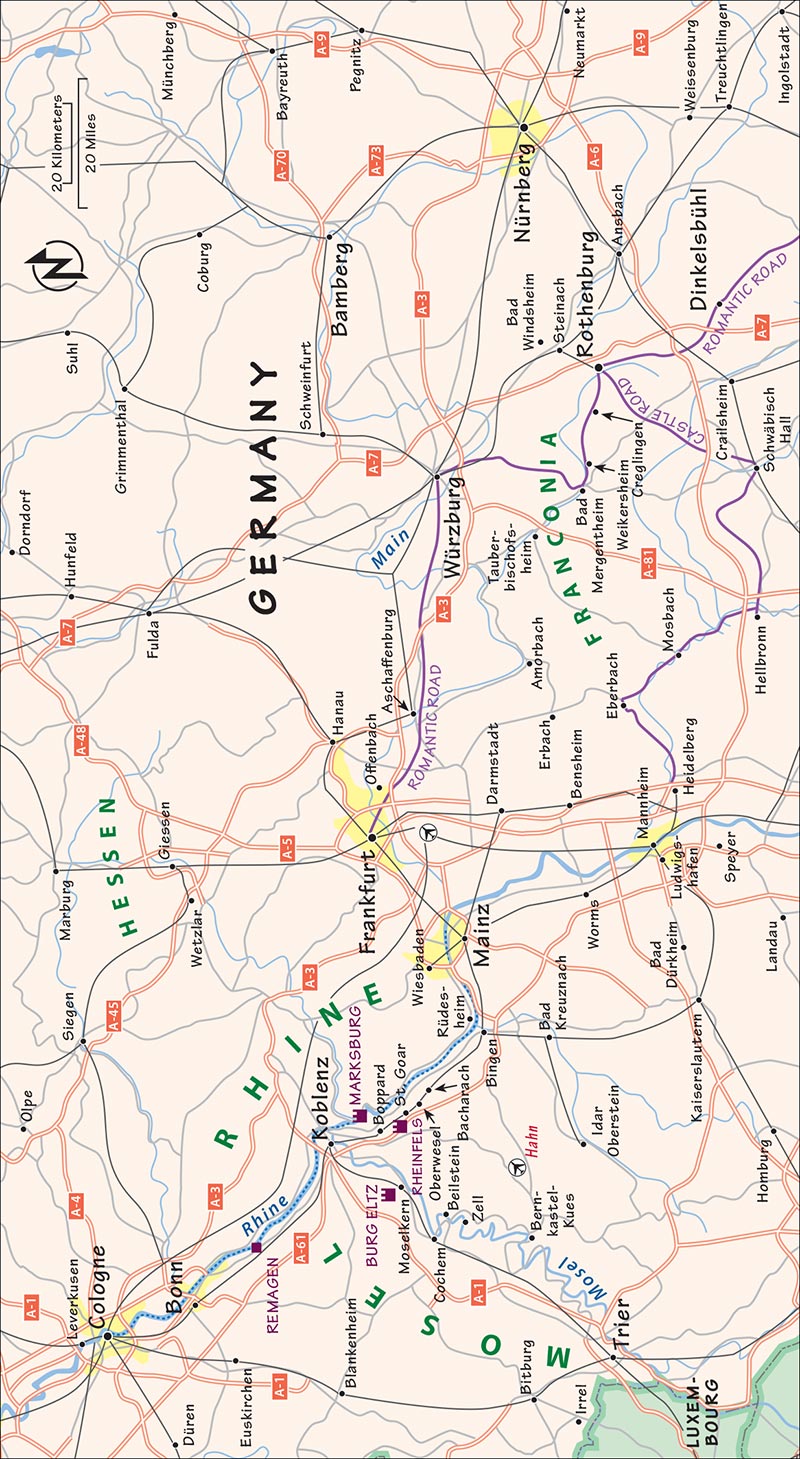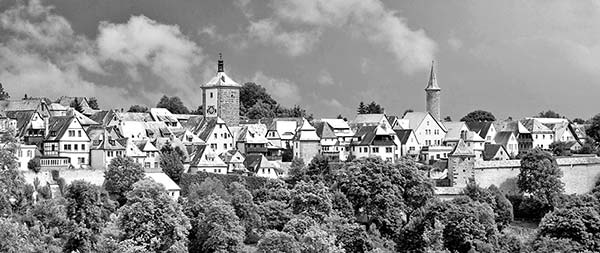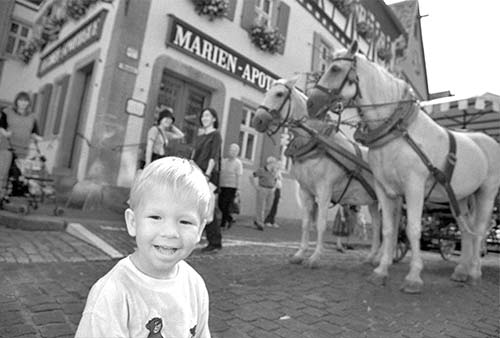Contents
Contents
Rick Steves
Snapshot
Rothenburg & the Rhine
This Snapshot guide, excerpted from my guidebook Rick Steves Germany, introduces you to some of the most romantic and historic parts of Germanyincluding the medieval walled town of Rothenburg ob der Tauber and the most picturesque stretch of the mighty Rhine River.
In Rothenburg, you can immerse yourself in the Middle Ages. Wander the towns mysterious and well-preserved ramparts, marvel at its churches grand Gothic altarpieces, shudder at its creatively sadistic Medieval Crime and Punishment Museum, and do some of the best souvenir shopping in Germany. Along the Rhine, you can enjoy a self-guided tour of this scenic stretch of riverwhether youre on a speedy train or the deck of a slow steamboatas you compare stately castles and silly legends. Listen for the intoxicating songs of the mythical Mdchen at the Loreley cliff. Hike to a pair of the best castles high above the river: the evocative ruins of Rheinfels Castle, and the well-preserved, fully furnished Marksburg Castle.
Then explore the other delights of this region. Wrzburg is a university town with an impressive, fun-to-tour Residenz palace (with manicured gardens and a dazzling Rococo chapel), a hilltop fortress, atmospheric wine bars, and a bridge thats perfect for strolling at sunset. Frankfurt is the countrys bustling banking center, with a skyscraping skyline, giving you a good look at modern Germany. The Mosel River Valley, near the Rhine Valley, harbors wine-loving cobbled towns, such as handy Cochem and tiny, quaint Beilstein. Nestled within a forest is my favorite European castle, Burg Eltz, which feels lived in, because it is. And busy Cologne, on the Rhine River, has a spectacular Gothic cathedral looming over its train station, making it a rewarding, quick stop thats especially convenient for train travelers.
To help you have the best trip possible, Ive included the following topics in this book:
Planning Your Time, with advice on how to make the most of your limited time
Orientation, including tourist information (abbreviated as TI), tips on public transportation, local tour options, and helpful hints
Sights with ratings:
Dont miss
Try hard to see
Worthwhile if you can make it
No ratingWorth knowing about
Sleeping and Eating, with good-value recommendations in every price range
Connections, with tips on trains, buses, and driving
Practicalities, near the end of this book, has information on money, staying connected, hotel reservations, transportation, and more, plus German survival phrases.
To travel smartly, read this little book in its entirety before you go. Its my hope that this guide will make your trip more meaningful and rewarding. Traveling like a temporary local, youll get the absolute most out of every mile, minute, and dollar.
Gute Reise!
The Romantic Road takes you through Bavarias medieval heartland, a route strewn with picturesque villages, farmhouses, onion-domed churches, Baroque palaces, and walled cities. The route, which runs from Wrzburg to Fssen, is the most scenic way to connect Frankfurt with Munich. No trains run along the full length of the Romantic Road, but Rothenburg (ROH-tehn-burg), the most interesting town along the way, is easy to reach by rail. Drivers can either zero in on Rothenburg or take some extra time to meander from town to town on the way. For nondrivers, a tour bus travels the Romantic Road once daily in each direction.

Countless travelers have searched for the elusive untouristy Rothenburg. There are many contenders (such as Michelstadt, Miltenberg, Bamberg, Bad Windsheim, and Dinkelsbhl), but none holds a candle to the king of medieval German cuteness. Even with crowds, overpriced souvenirs, Japanese-speaking night watchmen, and, yes, even Schneeballen, Rothenburg is best. Save time and mileage and be satisfied with the winner.
Rothenburg ob der Tauber
In the Middle Ages, when Berlin and Munich were just wide spots on the road, Rothenburg ob der Tauber was a free imperial city beholden only to the Holy Roman Emperor. During Rothenburgs heyday, from 1150 to 1400, it was a strategic stop on the trade routes between northern and southern Europe. Because of its privileged position, along with the abundant resources of its surrounding countryside (textile-producing sheep and fertile farmlands), Rothenburg thrived. With a whopping population of 6,000, it was one of Germanys largest towns. But as with many of Europes best time-warp towns, Rothenburgs fortunes tumbled suddenly. (In this case, it was an occupation/ransacking during the Thirty Years War, and a plague that followed soon after, that did the town in.) With no money to fix up its antiquated, severely leaning buildings, the town was left to languish in this state. Today, its the countrys best-preserved medieval walled town, enjoying tremendous tourist popularity without losing its charm.
Rothenburgs great trade these days is tourism: Two-thirds of the 2,500 people who live within its walls are employed to serve you. While roughly 2 million people visit each year, most come only on day trips. Rothenburg is yours after dark, when the groups vacate and the towns floodlit cobbles wring some romance out of any travel partner.


